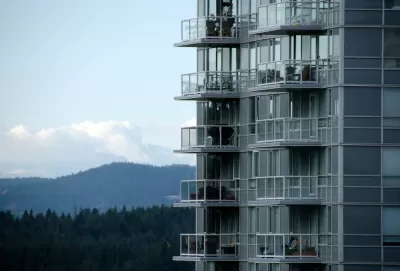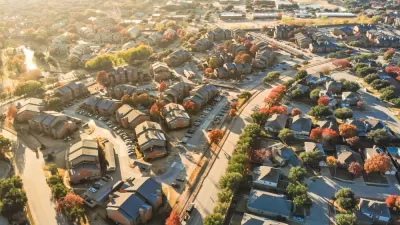Policies that encouraged urban segregation and led to the displacement and disenfranchisement of communities of color continue to reverberate in Canada's urban centers.

"In a 2012 report by the Canadian Centre for Policy Alternatives on municipal exclusion, author Ian Skelton noted that, 'the practice by municipalities of using controls on land use to constrain their social composition is a long standing one in Canada,'" reports Angela Wright in The Globe and Mail. In one example, Vancouver's Hogan's Alley, once a thriving Black community, "was demolished in the 1960s to make way for a municipal viaduct." Now, a group called the Hogan's Alley Society "wants to create a non-profit community land trust that would provide 70 per cent below-market rent and 30 per cent market rent with no private ownership."
Byron Nicholas, supervising transportation planner for Hudson, N.J., and creator of Black + Urban, "explains that when developers build luxury apartments with private amenities available only to residents, they are making decisions about who they want to make comfortable and provide services for and, by extension, who they care about." Privately owned public spaces have the potential to counter this exclusion, Wright says, "[b]ut to have this type of community-based planning approach, cities must address zoning bylaws." Zoning in Canadian cities, as elsewhere, "has been in the past used to control and segregate people," says Sandeep Agrawal of the School of Urban and Regional Planning at the University of Alberta. Now, cities like Edmonton, who Agrawal is working with, are taking a fresh look at their zoning codes "from equity and inclusivity lenses to make bylaws more reflective of contemporary urban realities."
"Inclusionary zoning that allows for supportive housing and mixed-use housing would go a long way to combat" the discrimination and marginalization created and perpetuated by racist zoning policies both past and present, says Agrawal. "Advocates say this can only be done with government investment in affordable and community housing." And while Canada's government supports community housing "through capital investments or loans," some activists say the programs are based on the "faulty notion that non-profit and community housing can be self-sustaining," advocating instead for ongoing housing subsidies and income supports.
FULL STORY: Yes, remnants of discriminatory urban planning remain

Planetizen Federal Action Tracker
A weekly monitor of how Trump’s orders and actions are impacting planners and planning in America.

Congressman Proposes Bill to Rename DC Metro “Trump Train”
The Make Autorail Great Again Act would withhold federal funding to the system until the Washington Metropolitan Area Transit Authority (WMATA), rebrands as the Washington Metropolitan Authority for Greater Access (WMAGA).

The Simple Legislative Tool Transforming Vacant Downtowns
In California, Michigan and Georgia, an easy win is bringing dollars — and delight — back to city centers.

The States Losing Rural Delivery Rooms at an Alarming Pace
In some states, as few as 9% of rural hospitals still deliver babies. As a result, rising pre-term births, no adequate pre-term care and harrowing close calls are a growing reality.

The Small South Asian Republic Going all in on EVs
Thanks to one simple policy change less than five years ago, 65% of new cars in this Himalayan country are now electric.

DC Backpedals on Bike Lane Protection, Swaps Barriers for Paint
Citing aesthetic concerns, the city is removing the concrete barriers and flexposts that once separated Arizona Avenue cyclists from motor vehicles.
Urban Design for Planners 1: Software Tools
This six-course series explores essential urban design concepts using open source software and equips planners with the tools they need to participate fully in the urban design process.
Planning for Universal Design
Learn the tools for implementing Universal Design in planning regulations.
Smith Gee Studio
City of Charlotte
City of Camden Redevelopment Agency
City of Astoria
Transportation Research & Education Center (TREC) at Portland State University
US High Speed Rail Association
City of Camden Redevelopment Agency
Municipality of Princeton (NJ)





























